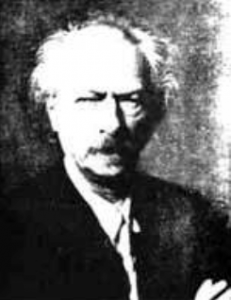Part Two: Polish Immigration to the United States by Alice Boberg and Ralph Wroblewski
Poles in World War I
World War I halted the flow of Poles to the United States, at least for the duration of the hostilities. Many Polish-Americans hoped that the defeat of Germany would bring about a restoration of their homeland. Supporting the United States’ intervention in the war, they patriotically worked to assure an American victory.
The prominent pianist, Ignace Paderewski became the informant for his country and came to America in 1915. Wherever and whenever he could, he visited the large cities and spoke of his country’s situation. It was his hope to free a country he loved by acquainting the American public with the existing conditions.[1] Paderewski’s sincere approach to the American-Poles made his appeals successful.
Opposed to injustice he preferred to “rely on superiority of right over might, and to that end he counselled love, not insurrection.”[2]
President Wilson, after being encouraged by the House to “endorse the movement for Polish independence” stated: “I take, it for granted that statesmen everywhere are agreed that there shall be a united, independent and autonomous Poland.”[3]
The years 1914 to 1916 saw the slow progression which eventually led to the United States intervention. In the beginning, this involvement was emotional and, later, became economic.

Recruitment of Poles
During this time Paderewski appealed to the Polish Falcons for their help to recruit a Kosciuszko Army to fight alongside the Americans. The Falcons unanimously voted in favor of Paderewski’s suggestion when War was officially declared on April 6, 1917.
This Kosciuszko Army grew to 100,000 men of which 28,000 were volunteers from the United States and others were prisoners of the Central Powers. They were under the command of General Jozef Haller.
Newton D. Baker, Secretary of War, states of these troops:
The American contigent of the Polish Army is made up of men moved by the inspiration of the principles involved on the Allied side in this conflict, and their presence on the Western front representing both their adherence to America as the country of their adoption, and to Poland, free and self-governing, as the country of their inspiring sight.[4]
Among the Polish-American communities a constant, patriotic feeling persisted during this war effort to free Poland from German domination. Thus, it could be seen that their participation in the War had a twofold purpose: to support America and to aid Poland in her pursuit of independence.[5]
Because of the victory which gave Poland her independence, the American Poles gained much prestige. They became more conscious of their heritage and developed outstanding Polish cultural institutions for the preservation of their heritage.
